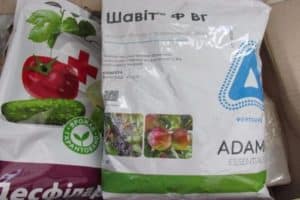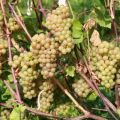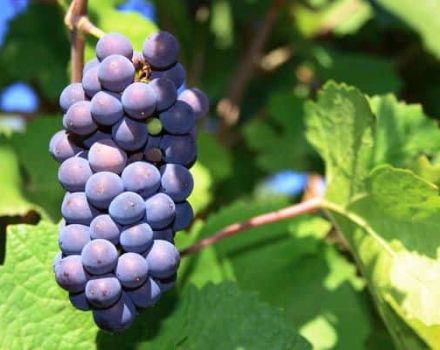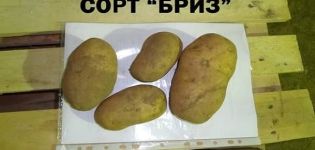Description of Mukuzani grapes, planting and care rules
The Mukuzani grape variety is considered a culture of folk selection, since there is no information about its breeding. This type of plant was discovered by chance in a Georgian village with the same name. Over time, the grapes were cultivated. Today it is very popular in the northern regions and in Central Russia. In order for a culture to develop normally and bear fruit abundantly, it must be properly looked after.
Description and characteristics of the Mukuzani variety
This hybrid grape is perfect for growing in the Voronezh region. However, this is far from the only region. The plant is characterized by an early ripening period. In the center, you can collect fruits in early August, in the north - at the end of September.
Shrub characteristics
The average plant height reaches 4 meters. According to the description, the leaves can have 3 or 5 lobes. Deep sections are observed on the surface of the plates. Leaves have a rounded shape and a rough surface..
The bush has bisexual flowers. Thanks to this, the plants are well pollinated and bring an excellent harvest. The shoots are characterized by excellent development. Each of them brings 4 large bunches.
Yield
From 1 adult bush, you can get 40-50 kilograms of harvest. The fruits are easy to carry.
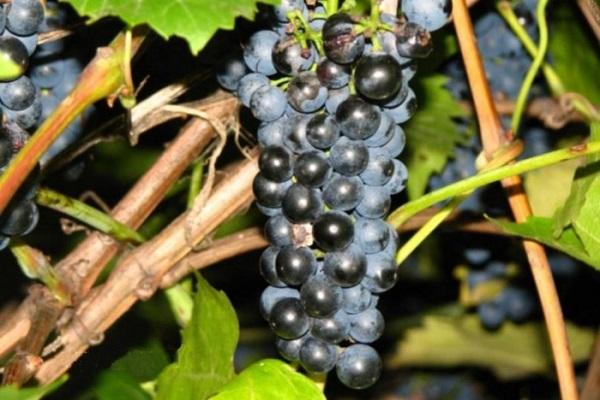
Bunches and berries
The brushes are tapered and densely packed. The bunches rarely grow more than 30 centimeters in length. The berries are small and round. Each of them weighs 1.5-3 grams.
The berries are distinguished by their usual taste without specific notes. The variety is well suited for making light wine. The fruits are dark purple in color. Each of them is covered with a natural bloom, which prolongs the shelf life of the fruit. The berry contains 2-3 seeds.
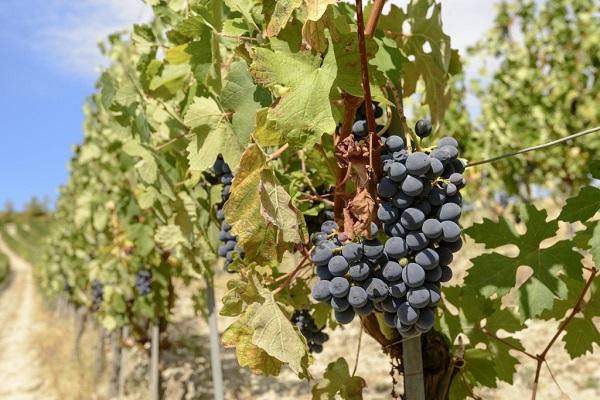
Main pros and cons
Mukuzani is a wild grape variety. Thanks to this, the variety is considered very resistant. Unlike cultivated varieties, the plant has strong immunity, easily adapts to negative conditions and does not suffer from pest attacks.
Other benefits of culture include:
- excellent portability;
- simultaneous ripening of fruits;
- resistance to major diseases;
- frost resistance;
- juicy fruits;
- pleasant taste.
The only drawback is the rapid development of shoots. This forces gardeners to prune frequently.
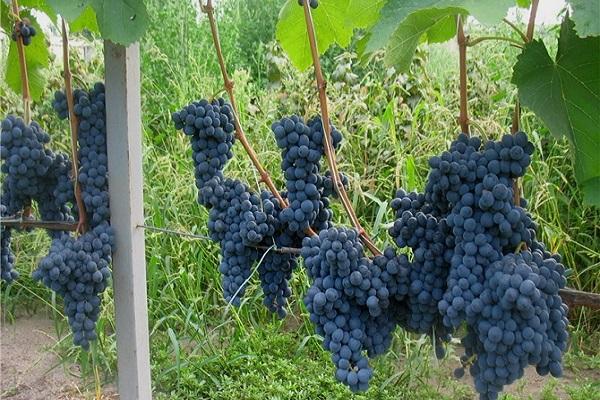
The subtleties of growing a plant
To achieve success in growing a crop, it is worthwhile to carry out planting work correctly and strictly follow the care recommendations.
Site selection and preparation
First of all, it is important to choose the site correctly. It is best to plant grapes on a southern slope that is well ventilated. The culture has long roots. Therefore, groundwater must lie at a depth of at least 2.5 meters.
Good precursors for the plant will be carrots, cereals, melons and gourds. Also grapes can be planted after carrots and zucchini.
Do not place it near sage and colored peas.
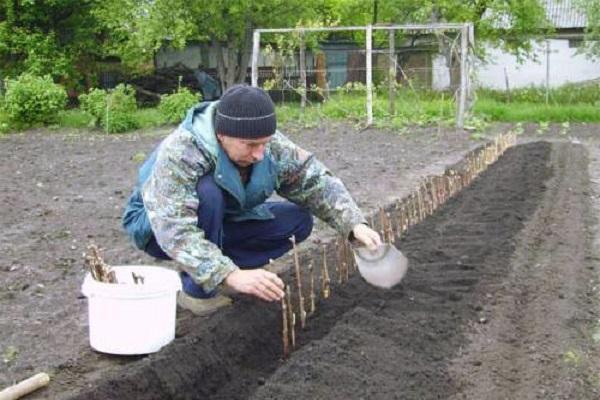
Black soil is perfect for culture. It is also permissible to plant grapes in sandy and loamy soil. If the soil is too acidic, lime should be added.
Landing in the ground
To plant a plant in a trench, it is worth digging holes 80x80 centimeters in size and laying drainage on the bottom. It is recommended to pour a layer of earth on top. A bush is placed on it, the root system is straightened and sprinkled with earth. The plant should be deepened to 2 buds, tamped and poured with 20 liters of water. Cover the ground with mulch.
Grape care rules
In order for the plant to bear fruit abundantly, it needs to be provided with quality care. It should be comprehensive.
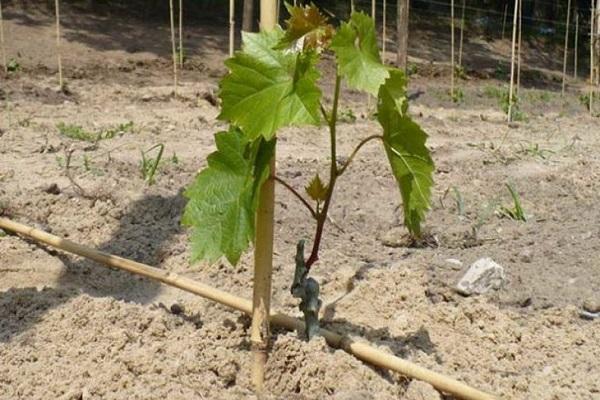
Fertilizer
In the first 2-3 years, the plant does not need organic matter. The first feeding is carried out for the growth of fruiting branches. To do this, dissolve 40 grams of ammonium nitrate, 20 grams of potassium salt, 15 grams of superphosphate in 10 liters of water.
To stimulate flowering and the formation of fruit ovaries, it is worth adding a composition based on 15 grams of ammonium nitrate and 20 grams of potassium salt. After 1 week, 5 grams of boric acid is added to the composition. During fruiting, it is worth using 40 grams of superphosphate and 20 grams of potassium magnesia.
Watering
Grapes of this variety tolerate dry weather normally. With stable precipitation, it is enough to water the plant 3-4 times. In the absence of rain, the first watering is performed in March and April, pouring 30 liters of water under the bush. The second time to moisten the soil is in May.
During fruiting, you need to water the plant 2-3 times.
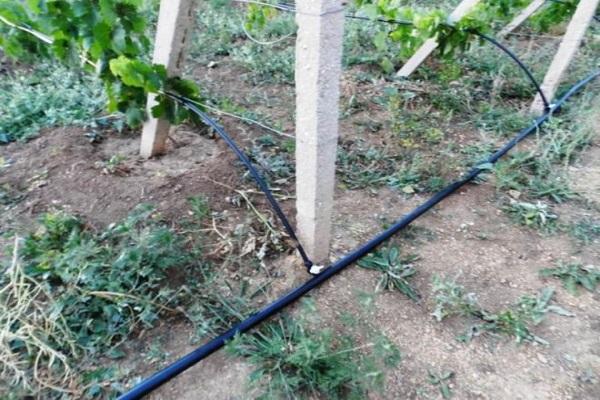
Pruning
Mukuzani requires systematic thinning of bushes and cutting off excess branches. If this procedure is not carried out in time, the berries will not fully ripen, which will cause uneven ripening of the vine. Spring pruning should be done in March.
Weeding
For the normal development of the bushes, the beds should be systematically weeded. There should be no weeds and other excess plants near the plant.
Wintering
For the winter, grapes should be removed from the support and pruned to leave short shoots. It is recommended to bend the vine to the ground, tie it and pin it to the ground. Then the plant is spud and covered with spruce branches.
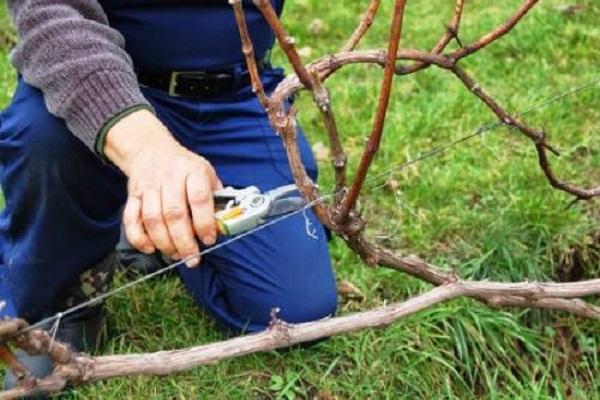
Disease and pest control methods
The bush can suffer from such diseases:
- Downy mildew. Bordeaux liquid is used to combat it.
- Gray rot. Copper sulfate will help to cope with the disease.
- Fruit rot. To eliminate problems, the bushes are treated with Khomus.
Of the pests, grapes are susceptible to attacks by wasps, aphids and birds. To cope with birds, the bushes are enclosed with dense nets. To protect the crop from wasps, special bags are suitable. Oxychom solution helps to cope with aphids.
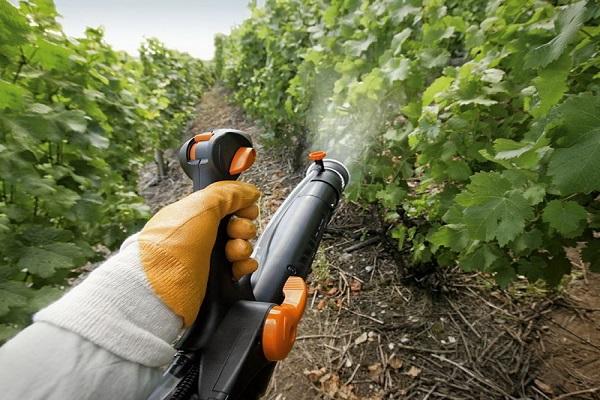
The timing and technology of harvesting
The fruits ripen in mid-August or early September. Harvesting is worth a sharp pruner. In this case, it is important to leave a long petiole. For transportation, grapes are put in small boxes with holes.
The Mukuzani grape is very popular with farmers and is often used for making wine.To obtain a bountiful harvest, the bush must be properly looked after.
